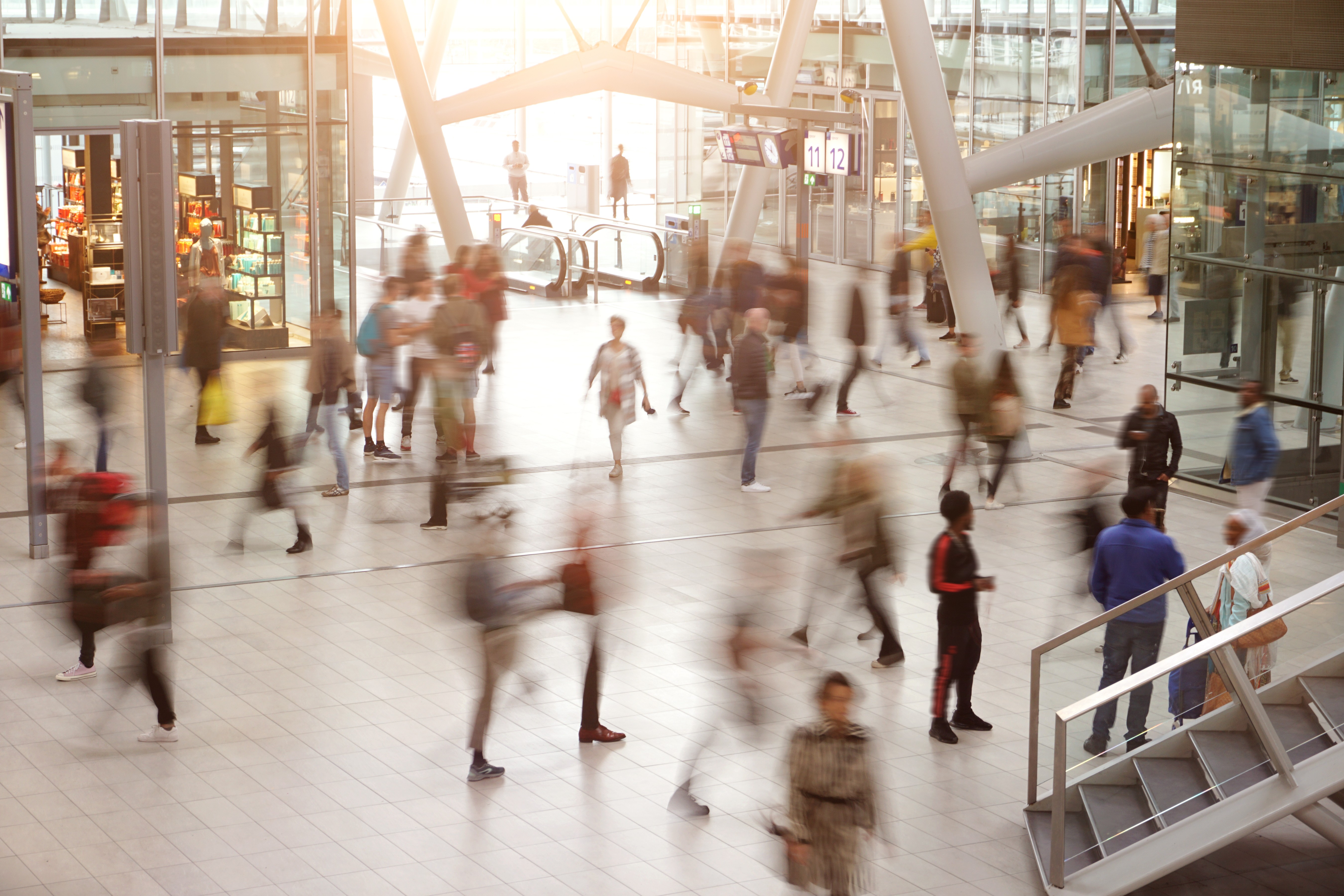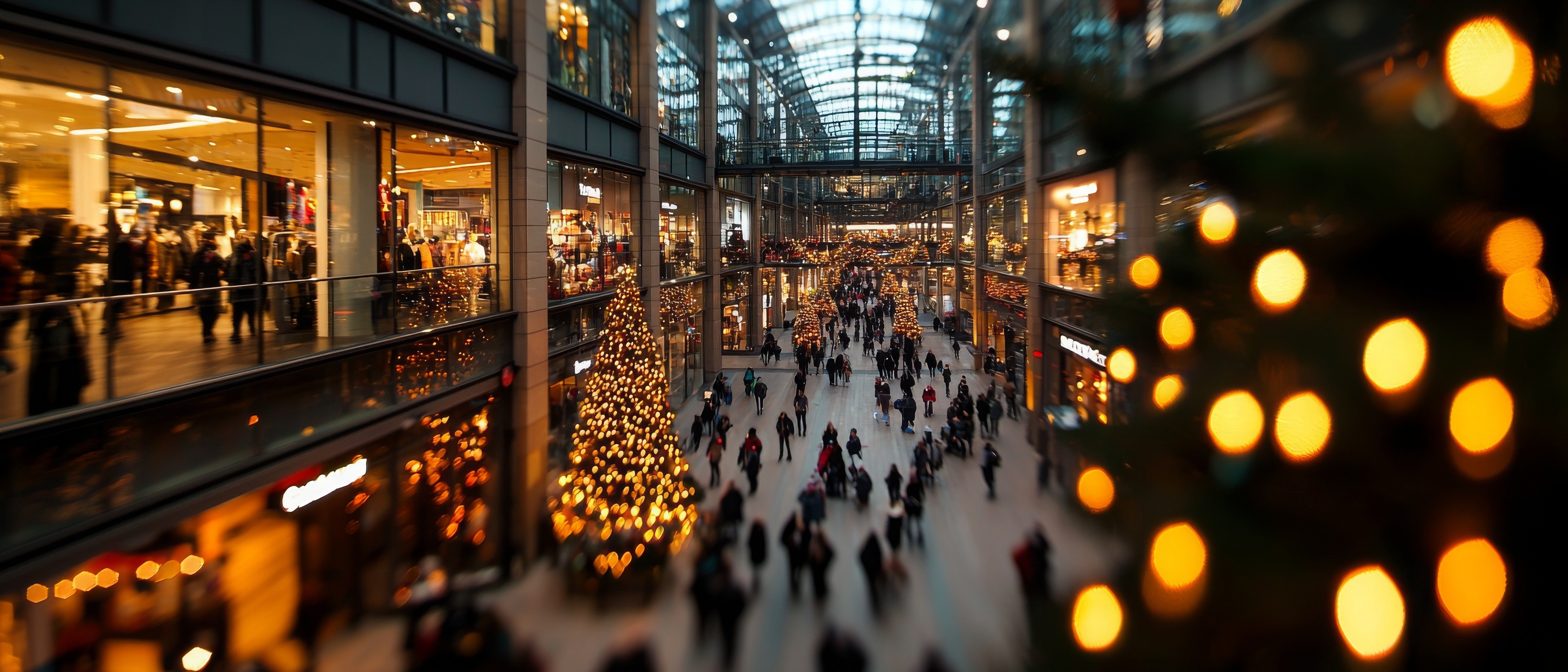Why occupancy detection is vital to your retail operations.
Nov 15, 2024
Why occupancy detection is vital to your retail operations
In retail, understanding consumer behaviour is key to success. While footfall data tells you how many people enter your store, occupancy detection goes a step further by showing you how many are actually inside at any given time. This distinction is crucial for making smarter decisions about staffing, store layout, and overall customer experience. In this blog, we’ll explore how occupancy detection helps businesses optimise operations, enhance customer satisfaction, and boost sales opportunities.
The difference between footfall and occupancy
Footfall data tracks the number of people who enter a store, but it doesn’t tell you how many are actually shopping inside. This is where occupancy detection comes in. By monitoring the number of people within the store at any given moment, occupancy data offers a more precise understanding of customer behaviour. High occupancy levels can indicate that a store is busy, while overcrowding might create a negative experience, leading to shorter visits or even customer exits.
With this deeper insight, retailers can fine-tune their approach to crowd management. For example, maintaining an ideal occupancy level ensures that customers don’t feel overwhelmed, leading to a more pleasant shopping experience and better chances of conversion.
Making informed staffing decisions
Occupancy detection is invaluable for making real-time staffing decisions. By comparing occupancy levels to footfall data, retailers can adjust staff numbers based on actual store conditions. For example, during peak hours, when occupancy is high, ensuring enough staff are available helps prevent customer frustration, manage queues, and maintain an organised store. Conversely, when occupancy is lower, fewer staff members can be scheduled, reducing operational costs without compromising service quality.
In addition, occupancy data helps retailers optimise staff scheduling over time. By analysing visitor patterns, businesses can anticipate peak periods, such as weekends or lunch hours, and plan accordingly. This leads to more efficient operations, improved customer service, and better staff utilisation, while also providing opportunities for targeted promotions or product placements during high-traffic times.
Improving customer experience and boosting sales opportunities
The key to improving customer satisfaction and driving sales lies in balancing the store’s occupancy levels. Too few people inside the store could signal a lack of interest, while too many could create a chaotic environment. By using occupancy detection, retailers can create a well-balanced, inviting atmosphere that encourages customers to linger longer and explore products.
When occupancy levels are optimised, it becomes easier to identify areas of the store that require attention, such as sections with high traffic but low sales. By adjusting the store layout or promoting key products in these areas, retailers can enhance the shopping experience and maximise revenue.
Occupancy detection for smarter retail operations
Occupancy detection is a game-changer for modern retail operations. By providing real-time insights into the number of people inside your store, it allows businesses to make data-driven decisions about staffing, layout, and promotions. Properly managing occupancy levels not only enhances the customer experience but also creates new sales opportunities and improves operational efficiency.
By combining footfall and occupancy data, you can ensure a seamless shopping environment that maximises both customer satisfaction and conversion rates. Don’t just track who enters – monitor how many stay, and use this information to transform your retail strategy.
Why occupancy detection is vital to your retail operations
In retail, understanding consumer behaviour is key to success. While footfall data tells you how many people enter your store, occupancy detection goes a step further by showing you how many are actually inside at any given time. This distinction is crucial for making smarter decisions about staffing, store layout, and overall customer experience. In this blog, we’ll explore how occupancy detection helps businesses optimise operations, enhance customer satisfaction, and boost sales opportunities.
The difference between footfall and occupancy
Footfall data tracks the number of people who enter a store, but it doesn’t tell you how many are actually shopping inside. This is where occupancy detection comes in. By monitoring the number of people within the store at any given moment, occupancy data offers a more precise understanding of customer behaviour. High occupancy levels can indicate that a store is busy, while overcrowding might create a negative experience, leading to shorter visits or even customer exits.
With this deeper insight, retailers can fine-tune their approach to crowd management. For example, maintaining an ideal occupancy level ensures that customers don’t feel overwhelmed, leading to a more pleasant shopping experience and better chances of conversion.
Making informed staffing decisions
Occupancy detection is invaluable for making real-time staffing decisions. By comparing occupancy levels to footfall data, retailers can adjust staff numbers based on actual store conditions. For example, during peak hours, when occupancy is high, ensuring enough staff are available helps prevent customer frustration, manage queues, and maintain an organised store. Conversely, when occupancy is lower, fewer staff members can be scheduled, reducing operational costs without compromising service quality.
In addition, occupancy data helps retailers optimise staff scheduling over time. By analysing visitor patterns, businesses can anticipate peak periods, such as weekends or lunch hours, and plan accordingly. This leads to more efficient operations, improved customer service, and better staff utilisation, while also providing opportunities for targeted promotions or product placements during high-traffic times.
Improving customer experience and boosting sales opportunities
The key to improving customer satisfaction and driving sales lies in balancing the store’s occupancy levels. Too few people inside the store could signal a lack of interest, while too many could create a chaotic environment. By using occupancy detection, retailers can create a well-balanced, inviting atmosphere that encourages customers to linger longer and explore products.
When occupancy levels are optimised, it becomes easier to identify areas of the store that require attention, such as sections with high traffic but low sales. By adjusting the store layout or promoting key products in these areas, retailers can enhance the shopping experience and maximise revenue.
Occupancy detection for smarter retail operations
Occupancy detection is a game-changer for modern retail operations. By providing real-time insights into the number of people inside your store, it allows businesses to make data-driven decisions about staffing, layout, and promotions. Properly managing occupancy levels not only enhances the customer experience but also creates new sales opportunities and improves operational efficiency.
By combining footfall and occupancy data, you can ensure a seamless shopping environment that maximises both customer satisfaction and conversion rates. Don’t just track who enters – monitor how many stay, and use this information to transform your retail strategy.
Why occupancy detection is vital to your retail operations
In retail, understanding consumer behaviour is key to success. While footfall data tells you how many people enter your store, occupancy detection goes a step further by showing you how many are actually inside at any given time. This distinction is crucial for making smarter decisions about staffing, store layout, and overall customer experience. In this blog, we’ll explore how occupancy detection helps businesses optimise operations, enhance customer satisfaction, and boost sales opportunities.
The difference between footfall and occupancy
Footfall data tracks the number of people who enter a store, but it doesn’t tell you how many are actually shopping inside. This is where occupancy detection comes in. By monitoring the number of people within the store at any given moment, occupancy data offers a more precise understanding of customer behaviour. High occupancy levels can indicate that a store is busy, while overcrowding might create a negative experience, leading to shorter visits or even customer exits.
With this deeper insight, retailers can fine-tune their approach to crowd management. For example, maintaining an ideal occupancy level ensures that customers don’t feel overwhelmed, leading to a more pleasant shopping experience and better chances of conversion.
Making informed staffing decisions
Occupancy detection is invaluable for making real-time staffing decisions. By comparing occupancy levels to footfall data, retailers can adjust staff numbers based on actual store conditions. For example, during peak hours, when occupancy is high, ensuring enough staff are available helps prevent customer frustration, manage queues, and maintain an organised store. Conversely, when occupancy is lower, fewer staff members can be scheduled, reducing operational costs without compromising service quality.
In addition, occupancy data helps retailers optimise staff scheduling over time. By analysing visitor patterns, businesses can anticipate peak periods, such as weekends or lunch hours, and plan accordingly. This leads to more efficient operations, improved customer service, and better staff utilisation, while also providing opportunities for targeted promotions or product placements during high-traffic times.
Improving customer experience and boosting sales opportunities
The key to improving customer satisfaction and driving sales lies in balancing the store’s occupancy levels. Too few people inside the store could signal a lack of interest, while too many could create a chaotic environment. By using occupancy detection, retailers can create a well-balanced, inviting atmosphere that encourages customers to linger longer and explore products.
When occupancy levels are optimised, it becomes easier to identify areas of the store that require attention, such as sections with high traffic but low sales. By adjusting the store layout or promoting key products in these areas, retailers can enhance the shopping experience and maximise revenue.
Occupancy detection for smarter retail operations
Occupancy detection is a game-changer for modern retail operations. By providing real-time insights into the number of people inside your store, it allows businesses to make data-driven decisions about staffing, layout, and promotions. Properly managing occupancy levels not only enhances the customer experience but also creates new sales opportunities and improves operational efficiency.
By combining footfall and occupancy data, you can ensure a seamless shopping environment that maximises both customer satisfaction and conversion rates. Don’t just track who enters – monitor how many stay, and use this information to transform your retail strategy.




